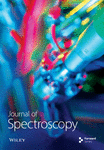New chaetoglobosins from maize infested by Phomopsis leptostromiformis fungi. Production, identification, and semi‒synthesis
Abstract
This paper deals with the cytotoxic chaetoglobosins obtained from culture on maize of the strains ATCC 26115 and MRC 2654 of the fungus Phomopsis leptostromiformis Both strains produced, in more or less important amounts, the known chaetoglobosins M (1) and N (2). In addition, the new chaetoglobosin O (3), was isolated from the ATCC 26115 strain and characterized by HRMS and 2D NMR experiments. With the MRC 2654 strain, a fungal metabolite 4, more polar than the chaetoglobosins M and N, was extracted and purified. Spectroscopic and chromatographic data of metabolite 4 led to its identification to the bridged chaetoglobosin named compound S, which previously has been obtained by intramolecular Michael reaction on the chaetoglobosin M. Moreover, a methylation under Williamson conditions of the chaetoglobosin 4 resulted in the formation of the trimethylated chaetoglobosin 5.




